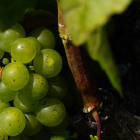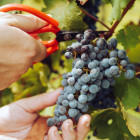Old vines have a lot to offer, but they’re often misunderstood.
This year saw the launch of the inaugural Old Vines Conference, a project dedicated to creating a credible wine category for Old Vine wines. Throughout March, a series of online events demonstrated how old vines can be a beacon for talent, innovation and connection, and highlighted the need to give old vineyards a valued and enduring place within the global wine industry. Here, we explore the history and current status of old vines, and what they have to offer.
What is an old vine?
Perhaps the biggest driver behind the creation of the Old Vines Conference is that there is no legal definition for ‘old vines’, which would be rendered as Vieilles Vignes, Vecchie Viti or Viñas Viejas, depending on whether you’re dealing with a French, Italian or Spanish bottle.
Indeed, coming up with even a loose definition is tricky, largely because of the plight of Phylloxera which ravaged vineyards in Europe (and many new world countries) during the 19th century. To ensure the world’s supply of vitis vinifera grapevines (all the noble varieties that are used to make wine) was not completely decimated, it was necessary to graft cuttings onto American rootstocks. This ensured the survival of many varieties, but came at a cost: grafting appears to weaken the vine and limit its commercially viable lifespan to around 25 to 30 years.
As such, the term ‘old’ is widely used in Europe for vines reaching around 25 years, although with the proper care and commitment vines can be nursed to half a century or older.
What about even older vines?
There are important exceptions to this loose ’25-year-rule’ though, and areas that managed to avoid Phylloxera are home to vines that are decades, if not centuries, old. Chile is one such example, protected as it is by the Andes on one side and the cool Pacific Ocean on the other, while in Europe, Cyprus has escaped the scourge of Phylloxera due to a combination of isolation, limestone-rich soils and altitude.
Significant parts of Australia have remained Phylloxera-free, due to geographical isolation and stringent quarantine measures, and it’s in the country’s southern region of Barossa that you’ll find perhaps the world’s highest concentration of venerable vines. An ‘Old Vine Charter’ was established here in 2009 to preserve their legacy – the most ancient of which date back to 1843. The categories include Old Vines (35+ years), Survivor Vines (70+ years), Centenarian Vines (100+ years) and Ancestor Vines (125+ years).
Do old vines look different to young vines?
Properly old vines – those surpassing the European 25-year age range – look wildly different to today’s widely-accepted vine aesthetic. Instead of the tight, uniform rows of trellises that became the norm in the latter 19th century, old vines boast gnarled shapes and enormous root girths scattered erratically across sparse fields, almost like a completely different plant species.
What are the benefits of old vines?
While proving this scientifically is almost impossible, the weight of anecdotal evidence is that more established vines give something to wine that young vines don't, which is why many top Bordeaux chateaux use fruit from their older vines in their top blends and Grand Vin. Generally speaking, older vines:
- Produce more concentrated fruit
Old vines tend to lose ‘productivity’ with age and over time ‘learn’ to self-regulate, producing small berries with a greater ration of tannin-packed skin to juice, which ripen more evenly.
- Have deeper roots
These vines are able to pull their nutrients and water sources from far below the surface, leading to more consistency between vintages and resilience to droughts and flooding. - Give a better expression of terroir
Some argue that the vines’ long-established presence in a particular region correlates with increased terroir expression.
- A more disease-resistant
Old vines seem to have tougher, more disease-resistant leaves, possibly because their canopies are less lush than their younger counterparts, leading to better sun exposure per leaf.
What challenges are associated with old vines?
The biggest challenge associated with old vines is their limited production, and that the physical aspects of old vines and their vineyards mean that modern agricultural equipment is out of the question – farming needs to be done by hand. Lower yields plus increased production costs means less money for the grape grower, so old vines are rarely an appealing financial prospect.
Additionally, older vineyards are rarely ‘on trend’. Instead of the ever-popular Sauvignon Blanc, Merlot or Chardonnay, older vineyards are generally planted with less popular varieties such as Trousseau and Carignan, which further limits their financial potential.
Do old vines make better wines?
Much of the controversy around the ‘old vine’ label is that for many, ‘older’ somehow means superior, but this is not the case. Bad wines are made from old vines just as good wines are made from very young vines, and so much of the end result depends on the skill of the winemaker and vineyard manager involved.
They key difference between old and young vines is that the very nature of old vines – with their gnarly physiques, limited yields and cost considerations – means they tend to attract producers that are committed to quality above all else, which is often a dependable sign post to wines worth trying.
So why preserve old vines?
Given the various cost-benefit considerations, it’s no surprise many question the point in pursuing old vines, and yet over the last 20 years or so the old vine movement has seen increased traction, with winemakers and viticulturists keen to discover, understand and protect old vines and viticultural heritage. In short, they are historians paring winemaking back to basics, without a focus on commercialisation or trends. These vines and vineyards capture a way of farming that is no longer done, which as the Old Vines Conference states, should be “treated as a premium category of rich and enduring worth.”






